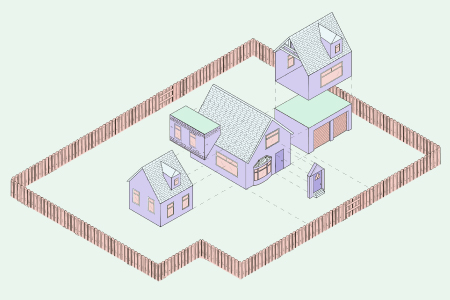
Give and Take
Issue 74 November 2010
A new conservatory, an extension on your kitchen – we’re always looking for ways to improve our living environment. Financial advisor, Taimoor Mirza, provides an insight on the loan options available to those wanting to enhance their living styles in this difficult economic climate.
Q) “I want to take out an extension on my house and have a small amount of equity within the property. Are there any shari’ah compliant ways to take out a loan to complete the building works and if not, what are the mainstream ways to do so?”
A) In the UK, shari’ah complaint ways of taking out a loan or a mortgage are unfortunately limited. This is, however, understandable as the Islamic finance and banking industry are still relatively new in the UK.
If you decide to take out a shari’ah compliant loan, regardless of the institution you opt to use, the actual application of the loan would be based on the Murabaha principle. Essentially, this is a contract for purchase and resale and allows the borrower to make a purchase without having to pay interest. The lender purchases the goods for the borrower, and then re-sells the goods back to the borrower on a deferred basis, adding an agreed profit margin. The borrower then pays the sale price for the goods over instalments, effectively obtaining credit without paying interest.
In terms of shari’ah compliance, this would be the best option, unless you already have a shari’ah compliant mortgage, where you can obtain extra borrowing. However, if you don’t, then it is best to explore the mainstream options available to you.
There are numerous options you can explore, which all depend on your personal circumstances. For example, depending on the size and the associated price tag of the extension, you need to consider in what form you want to take the borrowing and the period you are looking to pay it back in.
If you are looking to borrow more than £5,000, it is sometimes more prudent and more cost effective to borrow the amount from your existing mortgage provider. However, this isn’t always the case and your individual circumstances as well as the terms and conditions of your lender would ultimately dictate whether this is the right course of action to take.
The advantages of borrowing from your existing mortgage lender are quite straightforward. They already know you, as they have your details, so the process is quick and most importantly, the rate would be much cheaper than that of a loan. If you consider that you will be borrowing £5,000 over three years, most high street banks would be giving you an indicative rate of 7%, (normally for such a small amount of borrowing, due to the current volatile market, the rate would be higher) whereas, if your existing mortgage rate is 3.5% and you are able to borrow on that rate, it would be evidently cheaper.
Having said this, some lenders, and here it would also depend on the type of mortgage you took out (tracker, fixed, offset) and whether they were running a special offer with it, will allow you to borrow the £5,000 at 3.5% but would add that onto your mortgage over its full term. A mortgage is typically taken out over a 25 year period and for arguments sake, if you are in the third year, the lender would add the £5,000 onto your existing mortgage and you would have to pay interest on that for 22 years. In essence, you can consider that the £5,000 borrowed is paid off first, via your normal monthly payments, but technically it has been added and the interest calculated over the remaining period.
A lot of consumers still opt for this as it proves to be a manageable option for those looking for a short term solution and if you are short on cash, in terms of your monthly repayments, the amount added would be minimal – for a £5,000 loan, the monthly repayment could be as low as £25 a month.
If you wanted to take the amount over the three years from the mortgage lender, you can take ‘extra borrowing’ from the lender but keep it separate from the mortgage, whilst still having it secured on your property. There is no guarantee, however, that the lender would provide you with the same rate but you can obviously compare the rate offered with a normal conventional unsecured loan. The rate can vary depending on your LTV (loan to value - the amount you have borrowed against the value of your property), as well as the remainder of time left on your contract. For example, you may not want to take extra borrowing when your current deal will expire prior to the end of the extra borrowing. Thus if you decide to change lenders, you will have to pay an early settlement fee or the rate may be so low that you decide to keep the extra borrowing with your existing lender and just move your mortgage.
Sometimes there can be a stumbling block in terms of doing extra borrowing. This can be in relation to the effect that the new secured borrowing would have in terms of your LTV. If you already have 90% LTV and borrowing more would take it above that threshold and essentially move you to a higher rate, then your best option is to opt for an unsecured loan.
If you decide not to borrow the funds from your mortgage lender, do not just borrow money blindly from your existing bank. It is best to hop around to see who is offering the lowest rate. You can do this via various different comparison sites and also check their policy in regards to settling the loan early, just in case you decide to pay it off earlier than anticipated.
Bookmark this |
|
Add to DIGG |
|
Add to del.icio.us |
|
Stumble this |
|
Share on Facebook |
|
Share this |
|
Send to a Friend |
|
Link to this |
|
Printer Friendly |
|
Print in plain text |
|


Comments
0 Comments